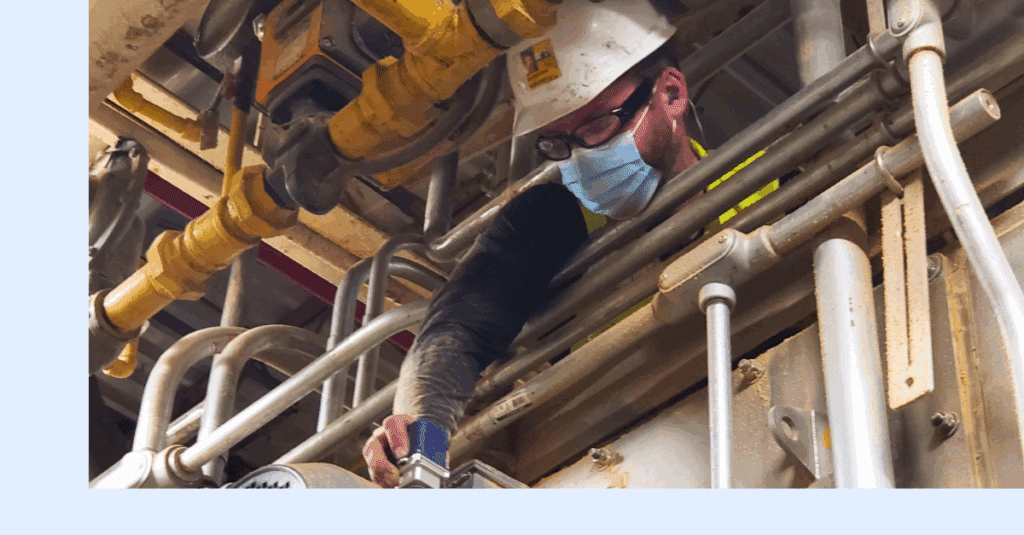
Augury recently commissioned Forrester Consulting to conduct in-depth interviews with Augury customers across different industries and deployment stages and aggregated and combined the results to form a single composite organization.
Through customer interviews, they analyzed real operational data, verified actual savings, and documented the true impact of our solutions. The results are in: 310% ROI, 15% maintenance savings, and $16.8M in cost savings from reduced unplanned downtime.
But these numbers tell only part of the story. How did our customers achieve these results? We asked CEO and Co-Founder Saar Yoskovitz five questions about implementation, adoption, and the common patterns that drive customer success.
The Forrester Total Economic Impact™ Study shows a significant 310% ROI over three years. What does this tell potential customers about the business case for investing in Augury’s Machine Health solutions?
Saar: There are two key reasons why companies start their digital manufacturing journey with Machine Health. First, it provides the fastest time to value you can have for any digital initiative because we have a full-stack solution. We install the sensors, run pre-built AI diagnostics, and have expert verification if needed. Within hours of installation, you know what’s wrong with your machines, and within a couple of months, you get full payback of the program.
The second point, which is equally important, is adoption and change management. Predictive maintenance is a less intimidating entry point for teams skeptical about AI in the industry. Once they see it accurately predicting failures, which they can physically verify, trust follows, and that trust becomes the foundation for broader digital transformation.
“Employees really like to use Augury as a tool. They have become more professional, and they have more knowledge about the machine since they started using it. Especially now, when we have to do more with fewer people, when we actually know the most critical issues we can prioritize much better.”
Forrester’s methodology creates a composite organization from actual customer interviews—in this case, showing $20.1 million value for a $20 billion manufacturer. How should smaller manufacturers think about their potential returns?
Saar: What weʼve seen is that manufacturing fundamentals don’t change with company size. Every factory faces the same reality. When machines fail, production stops, safety is compromised, and money is lost. Smaller companies may lack the corporate support structure, but they tend to move faster and be more open to change.
This is what makes our ROI so consistent. Whether you’re running one factory or fifty, you’ll see the same 3x return. The only difference is scale; a mid-market manufacturer might save half a million while an enterprise saves twenty million, but the percentage impact on their operations is identical.
A 5% incremental throughput increase was achieved by the composite organization. In today’s competitive manufacturing environment, how significant is this level of improvement for a company’s market position?
Saar: Think about what a 5% throughput improvement really means: if you’re running 20 factories, you’ve essentially created a 21st factory out of thin air. No new building, no additional CapEx, no hiring, just smarter use of assets you already own. This is what we call unlocking the “shadow factory” that exists within your current operations. It’s about revealing capacity that was always there, just hidden by inefficiency.
“The number one benefit is capacity of our lines. Every save that Augury makes results in significant unplanned downtime reduction and therefore unlocks essentially millions of pounds or gallons of product.”
Beyond quantified savings, how does proactive maintenance impact workplace safety and employee satisfaction?
Saar: There are two profound changes. First, your workday transforms. Instead of racing between machines, you’re actually thinking strategically. You can plan your day, focus on root causes, and leave firefighting mode.
But the bigger impact might be what happens after hours. That constant worry—will my phone ring at 2 AM? Can I commit to my daughter’s soccer game? Should I plan this vacation?—that weight disappears. You trust the system is watching, so you can be present at home.
What patterns do you see in how different manufacturers realize value?
Saar: Success patterns are clear, even when market conditions vary. Some industries are expanding, requiring better production rates to hit orders, while others are consolidating, requiring the remaining lines to carry the load of the ones that closed. Either way, technology is essential to remain agile and respond to changing conditions.
The biggest differentiator in success is organizational culture. Companies with centralized decision-making scale the impact 10x faster. When corporate and sites move together, you see results in months. When every plant runs its own program, you get isolated wins but no enterprise transformation.
The IT-OT partnership is just as critical. This isn’t a maintenance project or an IT initiative; it’s both. Winners are those where IT handles infrastructure and program management while OT drives adoption and value quantification. True collaboration between these teams is the difference between success and struggle. Your ability to scale is determined by your culture, not your technology.
Successful companies also understand that transformation requires true partnership, not just a vendor relationship. With the critical importance of adoption and the rapid pace of industrial innovation, your technology partner matters as much as the technology itself. You need someone invested in your success today while continuously advancing the platform for tomorrow. The right partner goes beyond installing sensors to help you build a predictive culture that evolves with your business.
Smart manufacturers are making an exciting discovery: they’ve been sitting on unused capacity all along by shifting from reactive to predictive maintenance. Ready to join them?
Start with data: Download Forrester’s Total Economic Impact™ study to see what 5% throughput improvement means for the composite organization.
Then get the implementation blueprint: Watch our webinar where Canfor’s Reliability Manager shares the keys to their PdM success story.




